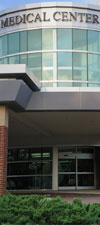When it comes to risk management in long term care facilities, leadership may focus on clinical risks, such as medication errors or physical safety risks such as falls – but there is a broad spectrum of risks that can lead to lawsuits. The long term care experts from Ultra’s risk management partner OmniSure Consulting Group pointed out some not-so-obvious risks and suggested some common sense solutions.
#1 – Wet floors – Environmental services staff mop floors or shampoo carpets and then typically use traditional yellow signs near the wet floor to warn walkers in an effort to prevent slipping and falling. Some even draw a giant arrow pointing one direction or another. The question is which side is wet, which side is dry? Visitors, employees and elders will draw different conclusions by choosing one side over the other, often with bad outcomes. Staff can be observed tip-toeing over wet floors – and that’s a slip waiting to happen. Elders who can’t determine which side to walk on will often take their walkers over wet floors.
SOLUTION: Block the wet floor with yellow chains (sold at hardware stores by the foot). Attach one end of the chain to the wet floor sign and lay the chain across the floor to protect anyone from attempting to traverse a wet floor.
#2 – There is never a nurse when I need one – Many nurses have walked down the hall yelling “Mary, Mary! Which room are you in?” or family members come to the nurses’ station saying “My mother needs to go to the bathroom, but I can’t find anyone to help.” Finding staff when needed is a problem for residents, families and fellow staff members. For example, if visitors attempt to assist a resident due to being too impatient for help to arrive, they could injure themselves or the resident.
SOLUTION: Get refrigerator magnets for every care giver. When they enter the room, they place their magnet on the door jamb (much like an oxygen sign). When they leave the room, they remove their magnet and go to the next room. That way, when a nurse needs a nurse aide, she merely looks for a magnet on the door. When families need help, they will learn to search for a magnet and wait outside of a room. The perception that “I can never find staff” will change to “My staff is always working with residents.”
#3 – Visitors are elderly, and some are frail enough to be residents – Visitors who park in the lot to visit their loved ones, often compete with staff and vendors for prime parking spots. Even handicapped spaces are taken quickly. The ironic part is that a spot for a physician is often reserved near the main entrance – even though the physician visits only once a month. Family members will not park in the prime “visitor” marked space because they don’t feel like they are a “visitor.”
SOLUTION: Reserve parking spaces near the front door by designating them as “Reserved for Families only.” Create signs for “family parking” to direct family members to park near the entrance. Physicians are able bodied, as are employees and visitors. Family members need to be close to the entrance to reduce the risk of slips, trips and falls.
#4 “We are working short” – The phrase used by staff will often echo throughout the customer base – and may lead to lawsuits. Many plaintiff attorneys will include understaffing in claims. Allowing staff to utter the phrase to customers is asking for trouble. During orientation, annual performance evaluations and at every in-service, remind staff that telling customers that they are at risk for abuse because someone did not show up for work is unethical and will not be tolerated.
SOLUTION: There will always be someone who does not show up for their shift. Create a “Red Method” for working that day. The “Red Method” is proactive nursing. Teach staff to enter the room of a resident and proactively offer assistance by saying “I am your C.N.A. today and I am here to help you. Are you cold, hot or thirsty? May I help you to the restroom?” Provide the service, then move to the next resident and ask the same questions of the resident. Repeat for all residents and then start again at the first resident. When residents can predict that a staff member will be in the room in a few minutes, they will use the call light less often and anticipate their needs as they expect staff to return. Proactive nursing solves problems before they arise making the shift that is under staffed run smoothly.
#5 In-service training that may or may not improve the working inside the facility – Staff may attend in-service training or participate in online training but does the information make the facility a better facility? For example, does one in-service training session ensure that staff will remember all the required steps in safely administering medication?
SOLUTION: Give post-tests, but give them 30 days after the in-service. The idea of the in-service is not to meet regulatory requirements, it is to improve job performance. Most employees can answer a post-test following the training, but few will get a 100 percent score 30 days later. For the in-person training, provide the post-test from the prior month in-service at the beginning of the next in-service. For online training, offer pop quizzes to confirm mastery of the concepts. These may be provided individually by asking the employee to stop by the nurse educator’s office to take a short quiz. Answering 10 to 15 questions will provide the educator with a good idea of who needs additional training or whether the training material needs to be adjusted.







COMMENTS
No comments yet. You should be kind and add one!
The comments are closed.